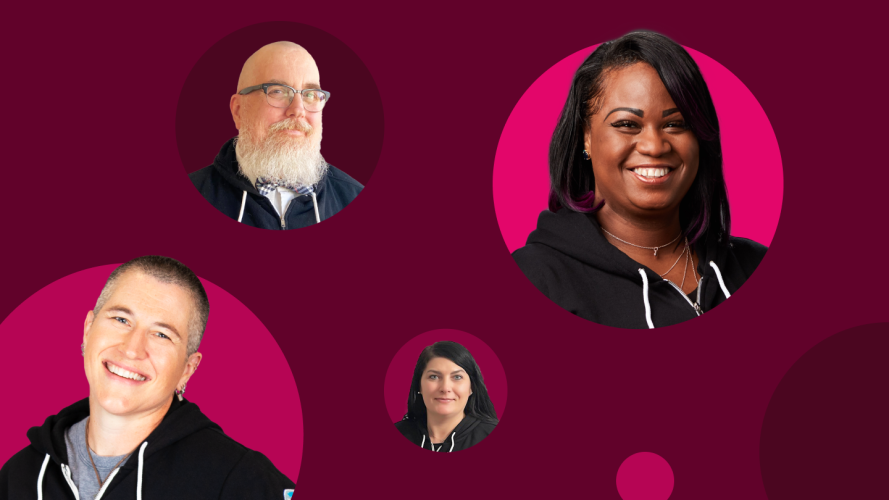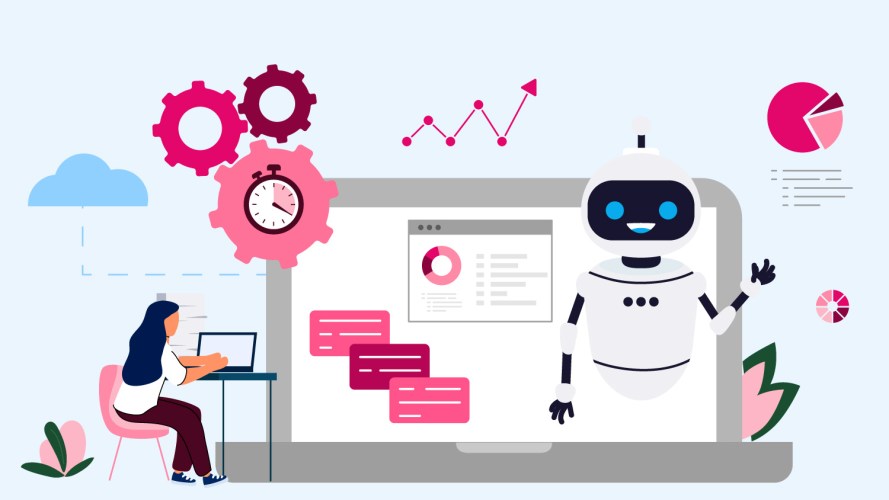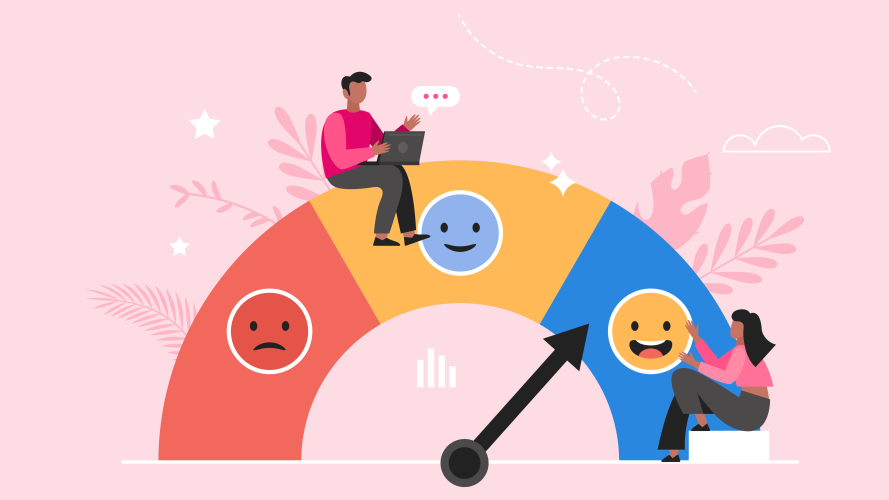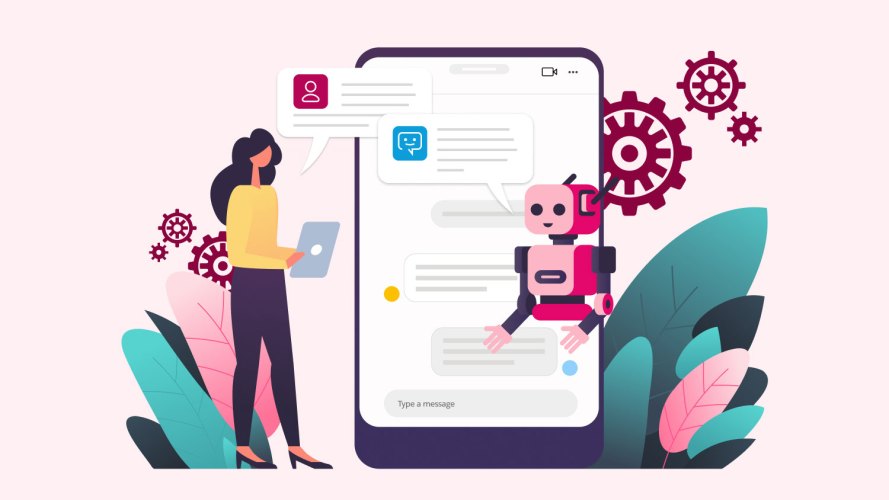Getting Started With AI and Chatbots: What’s Top of Mind for Your Customers?



Customers know when they want to solve a quick problem in an automated way. However, those goals or customer’s “intent" look very different for a retail company versus an insurance company.

Greg Bennett
I’m sure we’ve all experienced how artificial intelligence (AI) has made its way into our everyday lives — social networks recognize faces in your photos, and websites even suggest new products based on things you already own. As customers, we expect these types of benefits to come from the brands that we love immediately and frequently. Companies, on the other hand, struggle to meet those expectations at scale. AI can empower companies to help customers find answers and get help faster for their requests. That’s where chatbots come in.
Out of the pool of problems your customers have, there are some that are best suited for a talk with a human. But, that’s not “reset my password.” Agents’ time is precious, so save them for the complex stuff like “I need to book a special meal for my flight!” Let the chatbot take care of the simpler jobs.
Customers know when they want to solve a quick problem in an automated way. Companies should understand and prioritize the top goals a customer tries to achieve when they’re engaging in any digital channel. Those goals are what we call the customer’s “intent.” These intents could look very different for a retail company versus an insurance company.
And that’s what we tackled in research. What intents should I prioritize for my chatbot to help customers in my specific industry?
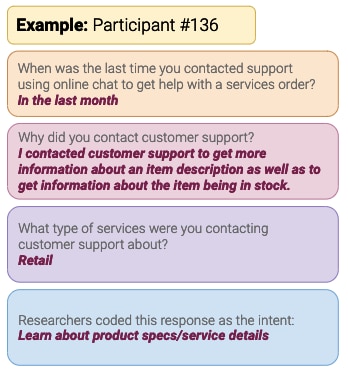
I quickly launched a survey and asked consumers about:
- The last time they used chat for a support issue
- The industry of the company they contacted
- What their issue/goal was — their “intent”
- A space to optionally add up to three additional intents for that industry
Respondents could either write in their own industry, or choose from: retail, banking, consumer goods, insurance, or travel and hospitality. I screened out any participant who hadn’t used chat in the last year because I wanted a fresh perspective, and aimed to balance out geographically across the four major regions of the U.S.
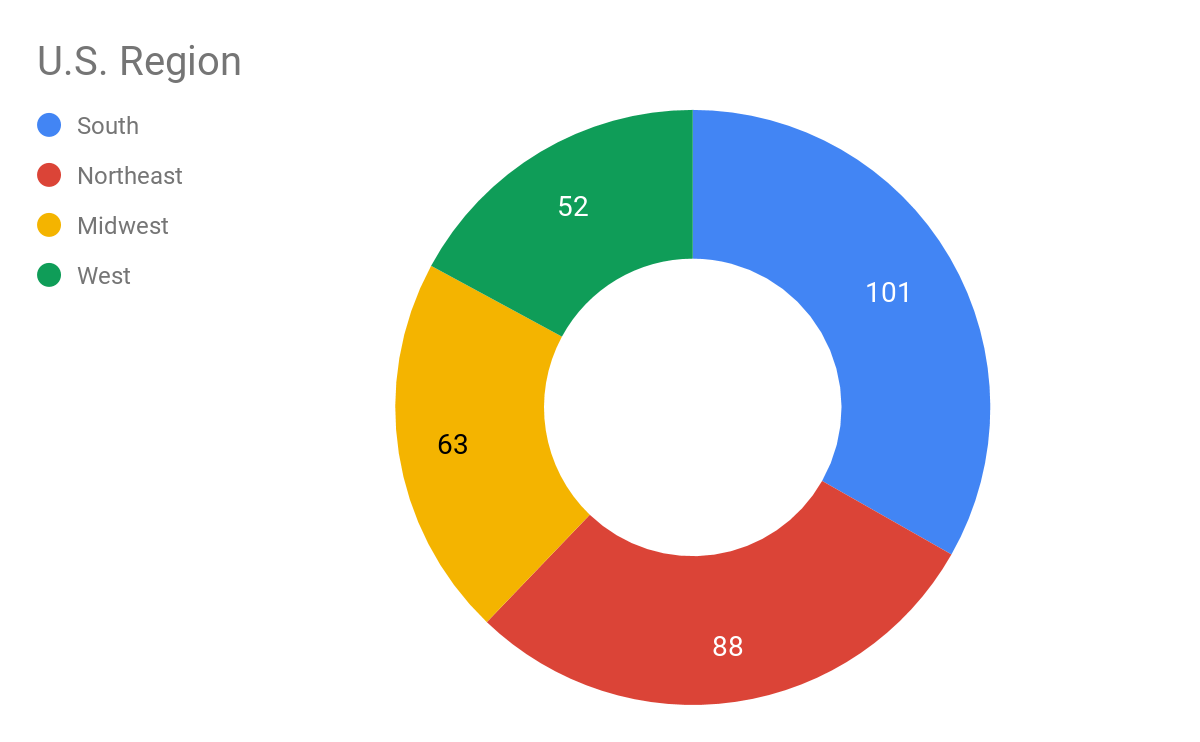
What I got back was a lot of data that showed the dominant chat intents across several industries for a small set of U.S. consumers. I worked with Long Giang, an amazing Year Up intern, to split the data set, get rid of any spam, and make sure we were classifying things in the same way. If you’re a research nerd like me, you’ll appreciate that we performed an interrater reliability test1 to make sure Long and I were on the same page. This is just a really fancy way of saying: we made sure to classify every response as an intent that started with a verb (e.g., “learn about product details” instead of “product details”) because every intent indicates an action that a user seeks to take, not just a use case or a topic they want to cover.
Once we had all of our responses classified as intents, my awesome research assistant, Mustafa Nasr, double-checked and refined the analysis and bucketed them within the following industries:
- Retail (191 mentions)
- Consumer goods (130 mentions)
- Cable and ISP (110 mentions)
- Banking (58 mentions)
- Insurance (20 mentions)
Interestingly, Cable and ISP was not an industry that we provided respondents in the survey; it emerged unprompted within the data. This shows us there is potential for chatbots as a solution to impact and scale service operations in this space. Unfortunately, we did not get enough information about Travel and Hospitality to provide any insights.
Before we dive into the results, the research nerd in me has to come out again and clarify: the results of this survey and analysis give directional guidance on top customer intents within the industries listed above. The sample size is not large enough for us to generalize about U.S. consumers, but these qualitative insights provide a more concrete direction for businesses to consider when prioritizing their intents for Einstein Bots within these industries. OK, let’s take a look at each of the industries.
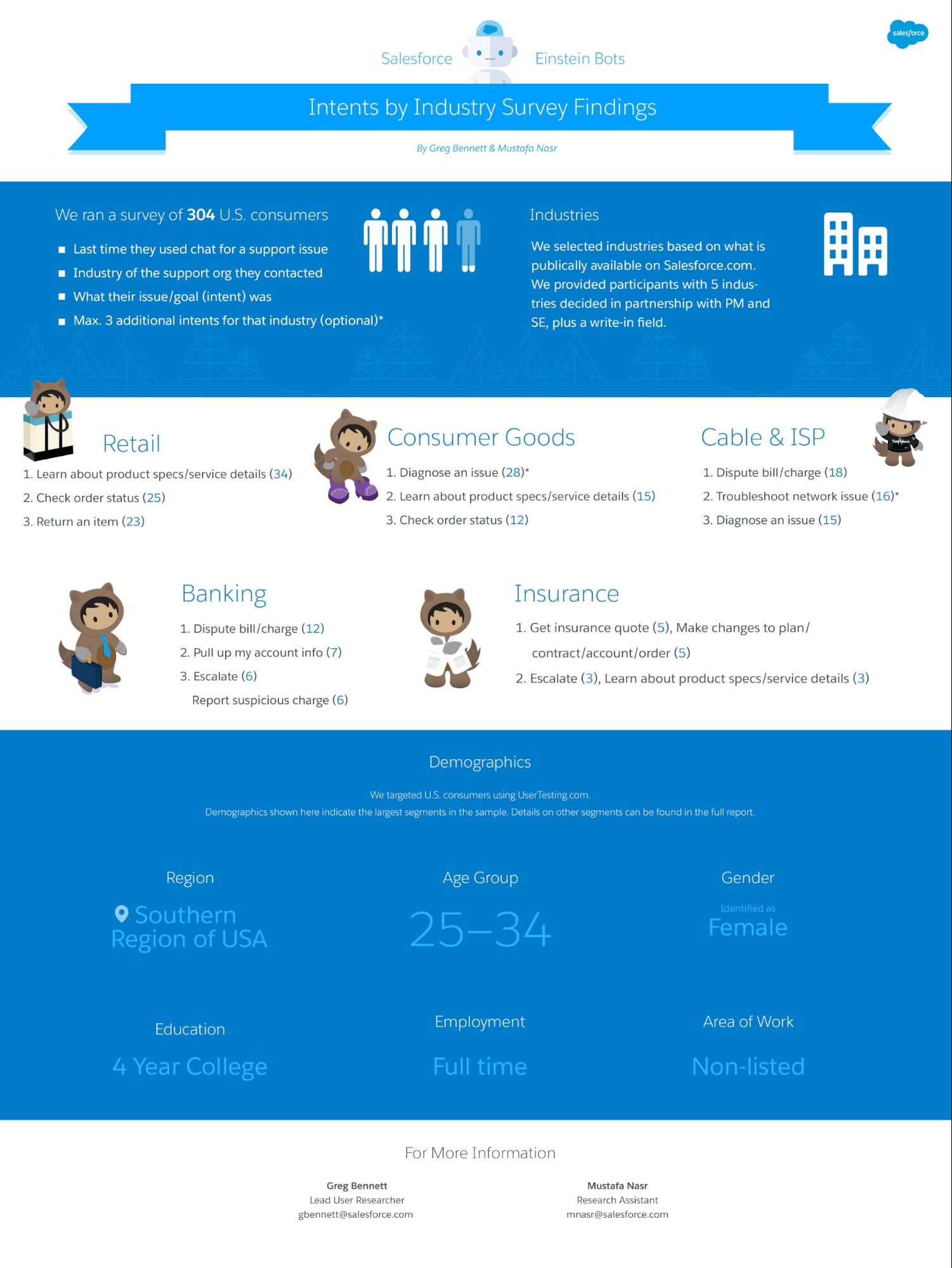
(Visual Design by George Hu)
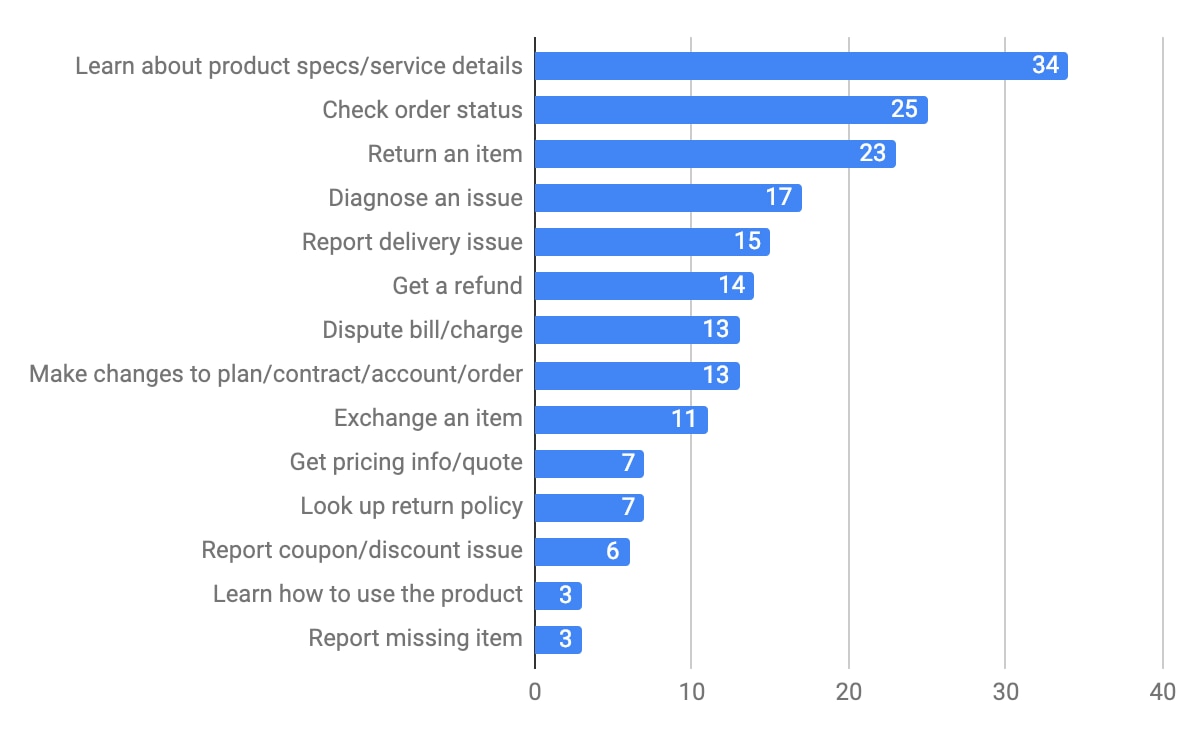
Retail
Top Three Intents:
- Learn about product specs/service details (34)
- Check order status (25)
- Return an item (23)
For teams building retail chatbots, we suggest breaking up product information into several messages to make it more conversational. Think about the back-and-forth nature of conversation about a product or service. Sometimes, there’s a lot to explain. The temptation is to send all that information in one message, but that’s overwhelming for the customer. Break up the content into multiple responses because a wall of text is not useful for a user in chat.
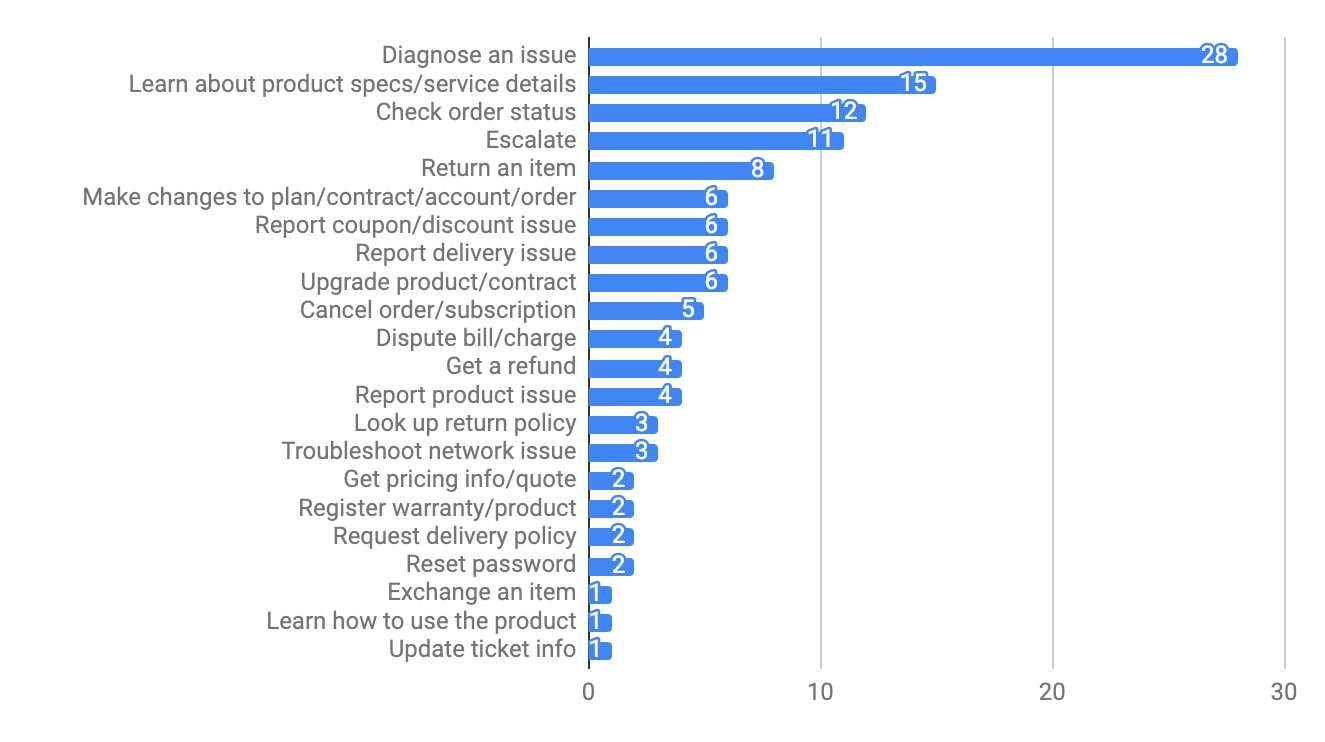
Consumer goods
Top Three Intents:
- Diagnose an issue (28)2
- Learn about product specs/service details (15)
- Check order status (12)
When making consumer goods chatbots, you should focus on designing conversations in a question and answer style. In order to diagnose an issue with a customer, the chatbot will have to ask them a lot of questions and receive many responses to figure out what’s wrong.
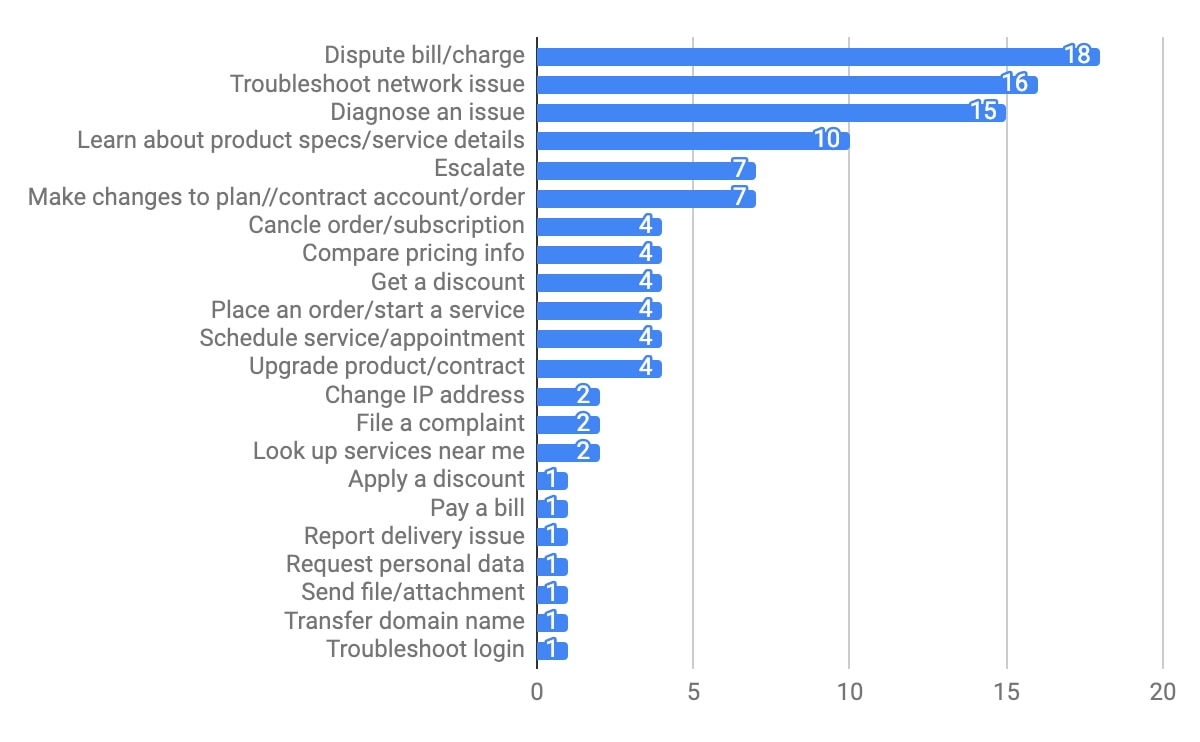
Cable and ISP
Top Three Intents:
- Dispute bill/charge (18)
- Troubleshoot network issue (16)3
- Diagnose an issue (15)
The conversation around disputing a bill or charge will look pretty similar to diagnosing an issue — lots of questions and answers. But, to troubleshoot a network issue, the chatbot needs to know whether or not the network reset was successful. Create a trigger — in Salesforce, we call this a “platform event” — that tells the chatbot how the reset went so it knows how to proceed in conversation with the customer.
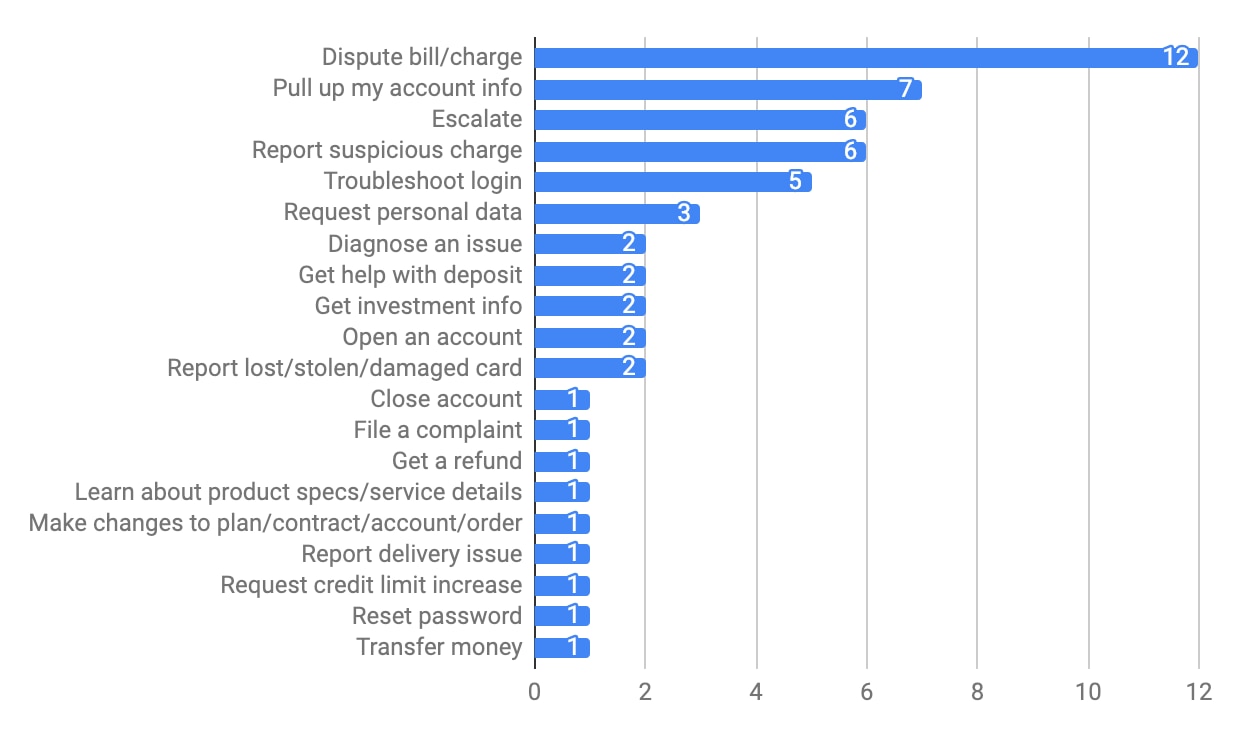
Banking
Top Three Intents:
- Dispute bill/charge (12)
- Pull up my account info (7)
- Escalate (6); Report a suspicious charge (6)
Dispute a bill or charge in banking, however, does look a little different because it involves sensitive customer data such as credit card numbers. Some financial institutions handle this with a secure payment window outside of the website, or in this case, the chatbot. You would also need a trigger or platform event to tell the chatbot once the customer has successfully input their information in the payment window so it knows to continue the conversation.
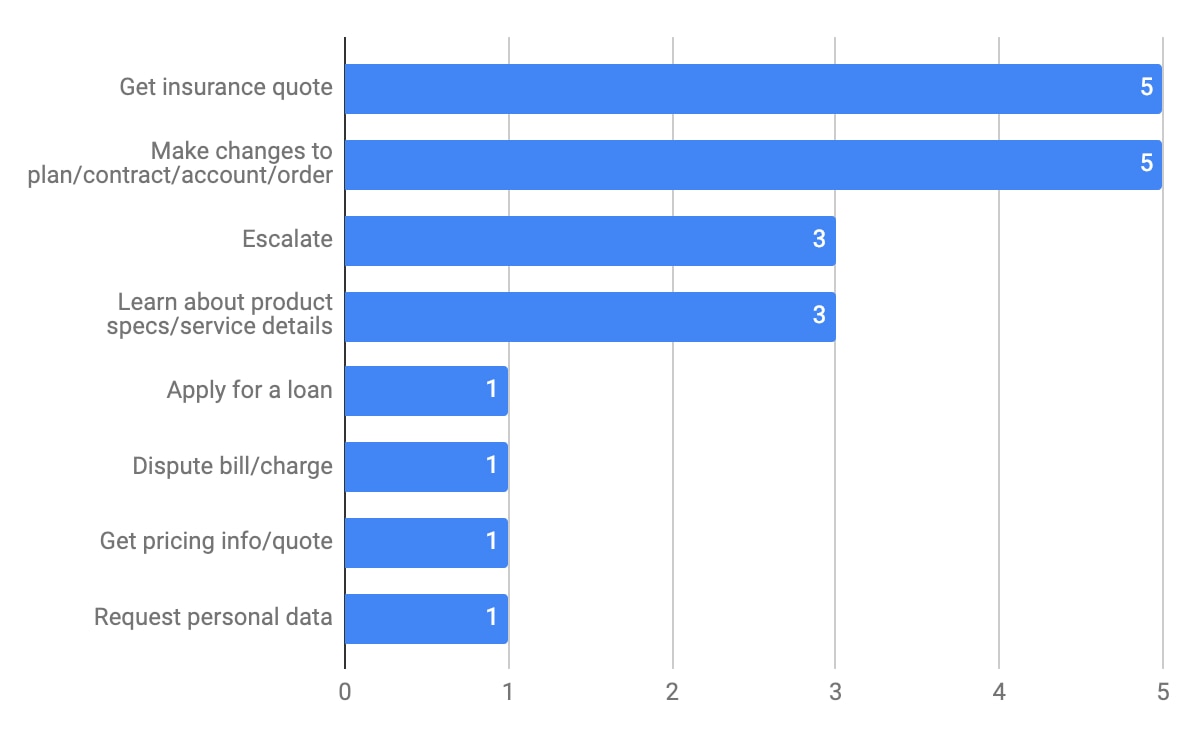
Insurance
Top Two Intents:
- Get insurance quote (5); Make changes to plan/contract/account/order (5)
- Escalate (3); Learn about product specs/service details (3)
We recommend that teams building insurance chatbots invest in designing conversations that specifically help escalate customers to a human agent. Chatbots are great at collecting and qualifying information before the customer reaches an agent. But, it’s important to be transparent and tell the customer when they’re talking to a chatbot instead of a human and vice versa — they should always know that the chatbot is getting ready to hand them off to a human.
The road to building your first chatbot can seem intimidating, but research is here to help you jumpstart the process and keep your customer at the center of it all.
To learn more about how to get started with Einstein Bots: Download our “Getting Started” Kit.
Want to share design/product feedback with our UX team? Sign up for Einstein Bots user research program.
1. Achieved 70% interrater agreement using a content/discourse analytic approach to code the unstructured data.
2. Teams building chatbots should also note the difference between ‘Diagnose an issue’ and ‘Report product issue’ because each requires a different conversational approach to address. Users who sought to diagnose an issue didn’t know what the problem with their product was (e.g., “My laptop won’t turn on, please help”), whereas users who sought to report a product issue knew what was wrong and wanted the problem remedied (e.g., “ I spilled water on my computer, please help”). ‘Diagnose an issue’ is more open-ended and will require the chatbot to ask the user to explain more about what they see with the product and would likely need to leverage more AI to make sense of the free-form text responses, whereas ‘Report product issue’ could be tackled with buttons based on your understanding of the most common problems with a given product.
3. Similar nuances as ‘Diagnose an issue.’














